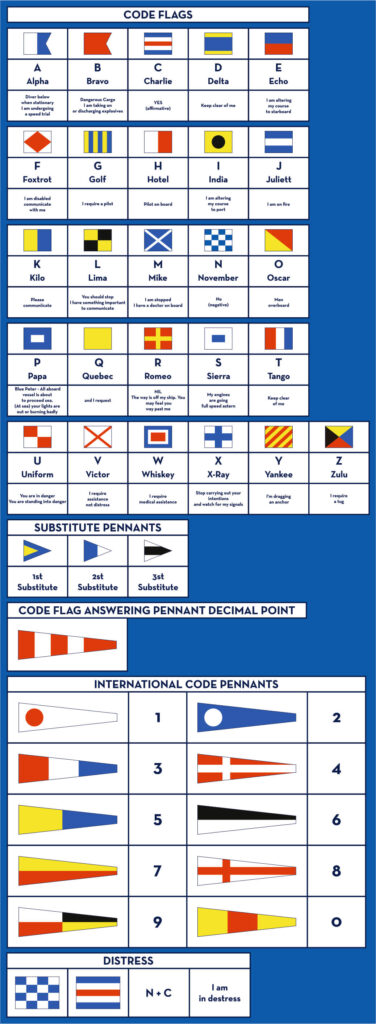International code signal flags are used to signal between two ships, vessels or between ship, vessels and the shore. The use of code signal flags as a form of communication go back to the Greeks and was formalised by the British Admiralty . Since the end of WWII it is administered by a UN body. As a form of communication on the water by vessels it provides ways and means of communicate in situations related to safety of navigation using a standardised alphabet.
You also see them displayed at Royal Australian Navy displays, Australian naval bases, Celebration Days, boating festivals, parades, and areas with heavy international shipping traffic.
The international Maritime Organisation (IMO) a specialised agency of the United Nations is regulates the use of code signal flags as they regulate shipping. The body headquarters is situated in London.
Code Signal flags, they are a make up as a set of different colours, shapes and markings which used singly or in combination have different meanings. These flags include twenty six (26) square flags which depict the letters of the alphabet, ten (10) numeral pendants, one answering pendant, and three substitutes or repeaters.
Australiana Flags offers the complete range of international signal code flags manufactured in either fully Sewn or Aqueous dyed using Woven Defence Force bunting cloth. The flags have a finished header with either loops, laces or stainless steel sister clips attached. Each code signal flag is individually inspected and put through quality control procedures.
They are all UV rated and are Made in Australia
Dress Lines
A Dress Line, or a complete set of code signal flags, can be made to order which sees the flags taped to allow the set to be run from stem-head to masthead to taffrail. They are great for use on special days of Celebration.
The Dress Lines are available in the following sequence:
E-Q-3-G-8-Z-4-W-6-P-1-I-ANSWER-T-Y-B-X-1st SUB-H-3rd SUB-D-F-2nd SUB-U-A-O-M-R-2-J-0-N-9-K-7-V-5-L-C-S


